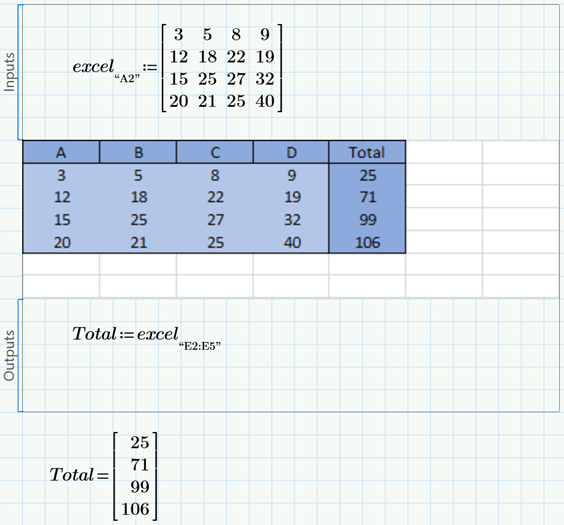A Comparison Between Mathcad And Microsoft Excel
There are several engineering-focused calculations software on the market. Mathcad is one of them, being one of the leading engineering mathematical calculations software. What is going to be highlighted below are the differences between Mathcad and Excel, which is software the majority of PC users can access. A few key areas will be compared in addition to exploring the interoperability of the two pieces of software.
Units Intelligence
One key benefit of Mathcad is its ability to intelligently keep track of the units in your calculations. These units are clearly visible in Mathcad and will display errors if they are used incorrectly, making mistakes easy to spot and subsequently correct. Manually converting units in Microsoft Excel leads to an increased risk of errors.
(Example of units used in the equation for acceleration)
Writing Maths
What sets Mathcad apart from Excel is the ability to write out your maths in natural math notation. When the written maths becomes more complex in Excel it is harder to spot mistakes, which is not helped by the fact these are hidden in cells. This difficulty to verify and validate calculations presents further issues such as reusing valuable engineering IP.
Content Protection
Both offer content protection options with Mathcad offering the functionality to content protect its Area regions. In Mathcad, this enables you to prevent parts of your calculations from being viewed or modified by people you share the worksheet with. PTC have additional content protection features planned for Mathcad see our roadmap blog article. Excel offers the options to Protect the Excel spreadsheet or the Workbook. These are essential features when collaborating within an organisation.
(Example of applying content protection in Mathcad)
Mathcad-Excel Integration
Mathcad and Excel can be used alongside each other using the READEXCEL, WRITEEXCEL and Excel Component functionality in Mathcad. The READEXCEL enables data to be read in from an Excel spreadsheet. This links to the file’s location and what rows and columns that you wish to import. The Excel component is a region in Mathcad that contains an embedded Mathcad sheet. Simply double-clicking on this opens a separate Excel window with full Excel functionality available. With your data now in Mathcad, you can better document and communicate your work to others using a combination of text, images, graphs, and document formatting options. You could also take full advantage of Mathcad’s data analysis capabilities to effectively interpret your dataset, as well as access a variety of other functionality.
(Example of Excel Component in Mathcad)
Conclusions
Microsoft Excel is likely already installed on your desktop or laptop. Mathcad should be viewed as an addition to this which can greatly improve your productivity by reducing the time taken to perform and check calculations. An important point to bear in mind is that Mathcad is designed specifically for engineers with many of the free worksheets available targeting Mechanical, Electrical and Civil Engineering and more.
If you would like a Demo or are interested in finding out more about Mathcad, please feel free to contact us or alternatively there’s more Articles and Resources available on our dedicated Mathcad website.
Get In Touch
If you are one of our customers and something you want to see in Mathcad Prime is not on these lists, then please get in contact with us by clicking on the button below.




